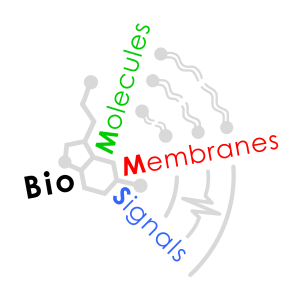Home | CV | Publications | Projects
Research interests
Prof. Velikova has 32-year experience in studying photosynthesis and 24-year experience in investigating biogenic volatile organic compounds. Prof. Velikova studies the interaction between biosphere and atmosphere with emphasis on primary and secondary metabolism of plants under environmental constrains; the impact of changing climatic factors and anthropogenic pollution on photosynthetic productivity. Phenotypic differences between plant populations from contrasting environments for identification of putative stress-responsive metabolites and understanding mechanisms of plant adaptation to stress conditions are also studied. Innovative LED light technology is used to develop more sustainable plant genotypes with increased levels of natural secondary metabolites, which are an important raw material for the food and pharmaceutical industries. Prof. Velikova research is also focused on the application of nanomaterials (carbon nanotubes, biocompatible polymer nanoparticles and magnetite), their physiological effects and the possibilities for overcoming adverse abiotic factors.
Education
- 2020: DSc, Institute of Plant Physiology and Genetics (IPPG), Bulgarian Academy of Sciences, Bulgaria (BAS)
- 1998: PhD in Plant Physiology, Institute of Plant Physiology (IPP), Bulgarian Academy of Sciences, Bulgaria
- 1986: MSc in Ecophysiology, Department of Ecology, Biological Faculty, Sofia University “St. Kl. Ohridski”, Bulgaria
Scientific career
- 2023 – present: Professor, Institute of Biophysics and Biomedical Engieering (IBPhBME), Bulgarian Academy of Sciences, Bulgaria (BAS)
- 2012 – present: Professor, Institute of Plant Physiology and Genetics (IPPG), Bulgarian Academy of Sciences, Bulgaria (BAS)
- 2006 – 2012: Assoc. Professor, Institute of Plant Physiology (IPP), Bulgarian Academy of Sciences, Bulgaria
- 1999 – 2006: Res. Assoc., Institute of Plant Physiology (IPP), Bulgarian Academy of Sciences, Bulgaria
- 1988 – 1998: Specialist, Institute of Plant Physiology (IPP), Bulgarian Academy of Sciences, Bulgaria
Fellowships
- 05/2012 – 2014: Alexander von Humboldt fellowship (ID: 1140077), Institute of Biochemical Plant Pathology (BIOP), Helmholtz Zentrum München, Neuherberg, Germany (18 months)
- 01/2011 – 12/2011: EC – Marie Curie Industry-Academia Partnership and Pathways (IAPP) “Application of innovative PTR-TOF mass spectrometry in plant biology, environmental science and food/food packaging” (PTR-TOF) (project no. 218065), CNR – Institute of Agroenvironmental and Forest Biology, Monterotondo (Rome) and Institute of Plant Protection, Florence, Italy (12 months) (FP 7)
- 05/2009 – 05/2010: PostDoc position at CNR, Istituto di Biologia Agroambientale e Forestale (IBAF), Rome, Italy (12 months)
- 01/2009: ACCENT “Access to infrastructures”, Istituto di Biologia Agroambientale e Forestale, Monterotondo Scalo (Rome), Italy (1 month)
- 07/2008 – 10/2008: European Science Foundation (ESF) – VOCBAS exchange grant – CNR, Istituto di Biologia Agroambientale e Forestale, Italy (4 months)
- 10/2007 – 12/2007: EC – Marie Curie Research and Training Network “Ecological and physiological functions of biogenic isoprenoids and their impact on the environment” (ISONET) (MRTN-CT-2003-504720) (3 months) (FP 6)
- 09/2006 – 12/2006: European Science Foundation (ESF) – VOCBAS exchange grant – Lancaster University, Department of Environmental Science, Lancaster, United Kingdom (4 months)
- 04/2006 – 06/2006: ACCENT “Access to infrastructures”, Istituto di Biologia Agroambientale e Forestale, Monterotondo Scalo (Rome), Italy (3 months)
- 01/2004 – 12/2004: NATO Science Fellowship Programme – New University of Lisbon, Faculty of Science and Technology, Lisbon, Portugal (12 months)
- 06/2003 – 11/2003: CNR-NATO Outreach Fellowship – Istituto di Biochimica ed Ecofisiologia Vegetale del CNR, Roma, Italy (6 months)
- 10/2002 – 12/2002: University of Dundee, Biological Faculty, Scotland (2 months)
- 07/2002 – 09/2002: CNR-NATO Outreach Fellowship – Istituto di Biochimica ed Ecofisiologia Vegetale del CNR, Roma, Italy (3 months)
- 05/2001 – 07/2001: NATO fellowship – Aristotle University of Thessaloniki, Faculty of Sciences, School of Biology, Department of Botany, Thessalonoki, Greece (2 months)
- 10/2000 – 03/2001& CNR-NATO Outreach Fellowship – Istituto di Biochimica ed Ecofisiologia Vegetale del CNR, Roma, Italy (6 months)
Prof. Velikova’s activities prove:
– For the first time to demonstrate that endogenous isoprene has an important protective role in plants, namely isoprene quenches the amount of hydrogen peroxide formed in leaves expose to ozone and reduces lipid peroxidation of cellular membranes (Loreto and Velikova 2001 – Plant Physiology 127:1781-1787);
– The protective role of endogenous isoprene against singlet oxygen was also demonstrated (Velikova et al. 2004 – Physiologia Plantarum 2004 122:219-225), suggesting that the protection mechanisms may involve a direct reaction of isoprene with this harmful reactive oxygen species (ROS).
– Expansion of the work on isoprene ability to regulate over-accumulation of ROS demonstrated that isoprene can simultaneously quench nitric oxide and ROS and this is an effective mechanism to control dangerous compounds formed under oxidative stress conditions, thus attenuating the induction of hypersensitive response leading to programmed cell death (Velikova et al. 2005 New Phytologist 166:419-426; Velikova et al. 2008 Plant Cell and Environment 31:1882-1894).
– Evidences are provided that endogenous isoprene is not only able to protect leaves against heat but also helps leaves to recover when the heat stress is alleviated (Velikova and Loreto 2005 Plant Cell Environment 28:318-327). This protective action was due to ROS-scavenging and membrane-stabilizing properties of isoprene, and it was suggested that endogenous isoprene can contribute to the non-enzymatic defence of the plant (Velikova V et al. 2006 Functional Plant Biology 33:931-940).
– It was directly demonstrated by using different biophysical techniques that isoprene has crucial role in preserving the intactness of thylakoid membranes under heat stress, and more specifically the functionality of photosystem II, suggesting some modifications in lipid environment due to isoprene presence (Velikova et al. 2011 Plant Physiology 157: 905-916).
– It was shown that not only isoprene, but other, higher molecular weight isoprenoids, as cis-beta-ocimene and linalool, may play an important role in plant resistance mechanisms against heavy metal stress (Velikova et al. 2011 Environmental Pollution 159:1058-1066).
– The effect of a future climate scenario – elevated CO2 and temperature, on plant stress resistance as mediated by volatile secondary metabolites was also reveal (Velikova et al. 2009 Environment Pollution 157:2629-2637).
– It was demonstrated that genetically modified tobacco plants able to emit isoprene were better protected from oxidative stress than naturally non-isoprene emitting tobacco (Vickers CE et al. 2009 Plant Cell and Environment 32:520-531).
– New approach for quantitative and qualitative proteomics based on stable isotope-coded protein labeling (ICPL) in combination with polyacrylamide gel electrophoresis (PAGE) and liquid chromatography tandem mass spectrometry (LC-MS/MS) were used to elucidate the chloroplast proteome of isoprene-emitting and non isoprene-emitting poplars. It was demonstrated that the suppression of isoprene synthase by RNA interference, leading to the development of non isoprene-emitting poplar genotypes, decreased levels of chloroplast proteins involved in photosynthesis and increased levels of histones and ribosomal proteins. The removal of isoprene emission in poplar causes large changes in the proteome of chloroplasts affecting the structural organization of thylakoid membranes. The absence of isoprene synthase activity and consequently of isoprene emission implied a down-regulation of proteins related to light reactions of photosynthesis, redox regulation and oxidative stress defense (Velikova et al. 2014 Journal of Proteome Research 13: 2005-2018).
Prof. Velikova’s scientific achievements made significant contribution to the field of plant physiology and biochemistry:
– The mitochondrial respiration during photosynthesis was measured for the first time in illuminated C4 plant. The results show that a very low amount of respiratory CO2 is released by maize leaves even when they are subject to rapidly developing salt and water stresses. Experimental evidence is also provided that CO2 is released only when photosynthesis is low because of limiting light intensity or in leaves exposed to heat stress. The majority of the CO2 formed through mitochondrial respiration is refixed in the mesophyll when photosynthesis is high. Mitochondrial respiration may become inhibited only under severe water-stress conditions (Loreto et al. 2001 Australian Journal of Plant Physiology 28:1103-1108).
– The singlet oxygen quenching properties of phenylamide compounds was demonstrated for the first time. Evidence was obtained that their acidic parent compounds (p-coumaric, caffeic and ferulic), as well as free polyamines (putrescine, spermidine and spermine) can act as quenchers of singlet oxygen, with this ability being dependent on the number of amino groups. The covalent bonding of putrescine with hydroxycinnamic acids results in potentiation of the singlet oxygen quenching ability in the phenylamide conjugates. Thus, both PA and phenylamides implicate in the versatile non-enzymatic ROS-scavenging network of plants, and can play a role in the antioxidant defense, particularly at sites of intensive singlet oxygen generation, such as the photosynthetic centers (Velikova et al. 2007 Zeitschrift für Naturforschung 62c:833-838). Exogenous polyamines (spermidine and spermine) prevent plants from developing of oxidative stress injuries caused by simulated acid rain. It was suggested that polyamines may “prime” the cell to meet and combat stress by stabilizing membranes and forming a potential of higher “buffering” and antioxidant capacity. The more pronounced protective effect of spermine in comparison with spermidine could be accounted for by its longer chain and greater number of positive charges which allows more important neutralizing and membrane stabilizing ability (Velikova et al. 2000 Plant Science 151:59-66).
– It was demonstrated that egg deposition per se may significantly affect the plant’s primary metabolism and reduce photosynthetic activity (Velikova et al. 2010 Journal of Chemical Ecology 36:629-641).
The awards granted to Prof. Velikova’s proposed projects by various associations, as Alexander von Humboldt Foundation (in 2012), EU-FP7 – Marie Curie Industry-Academia Partnership and Pathways (IAPP) (in 2011), the North Atlantic Treaty Organization (NATO, in 2000, 2001, 2003, 2004), European Science Foundation (ESF, in 2005, 2006, 2008), ACCENT-BIAFLUX (in 2006, 2009) prove her scientific excellence.







